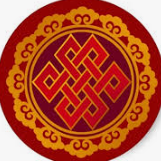Thai Rice Exports: 'Sector May Be Heading For Disaster'
-
Recently Browsing 0 members
- No registered users viewing this page.
-
Topics
-
Popular Contributors
-
Latest posts...
-
21
Trump Announces Steel Tariff Hike to 50%
Grumps shot his bolt. The whole world knows he's going to back down. He's pathetic -
132
Rising anti-Indian sentiment
"Goa is not India" – or so the Goans will often say. There's a strong local sentiment that sets them apart from the rest of the country, and it’s not uncommon to hear Goans speak critically, even mockingly, of the behaviour of Indian tourists who visit their state. That said, I’ve personally found Goans to be, for lack of a better term, a step above – more easy-going, open-minded, and socially attuned – than the average Indian from elsewhere. Whether that’s a fair comparison or not is up for debate, but the cultural difference is certainly noticeable. -
154
Why do so many posters continually diss other posters?
Thanks for contributing your opinion on something.... -
132
Rising anti-Indian sentiment
I believe that could be said of any nationality when encountered in large groups. What you're highlighting, I think, is less about racism and could more accurately be described as 'groupism' and the tendency to judge individuals based on perceived traits of the collective... When we observe a large group of any nationality, it's often the worst-behaved, the loudest, or the most obnoxious who capture our attention. Sadly, this leads to sweeping generalisations, where an entire group is unfairly judged by the actions of a few - we see it with negative comments on here about Russians, Israeli's, Brits, Chinese, Aussies, Americans etc etc... On a personal level, however, I've found Indians among the most easily likeable people I've met. Working alongside Indian colleagues has added another dimension to my view. At peer level, I've found them exceptional – intelligent, collaborative, and driven. But within hierarchies, there's a noticeable harshness towards those perceived as lower on the professional or social ladder, particularly when caste considerations come into play. Working for Indian-led teams can be challenging; in one case, I had to walk away from a project due to dangerously unrealistic expectations and pace, which created serious safety concerns. You mentioned you wouldn't go to a restaurant that was full of Indians - I think thats fair enough, I'd avoid a restaurant that was obviously fully of any single nationality - primarily because its more likely to just be a lot louder and chaotic more than anything else... I like places most when there is a large mix... -
13
Google Pay and cardless ATM withdrawals?
Any updates on this almost 2 year old thread? Found it by googling the subject? Now that Bangkok Bank is shutting down tourist accounts I need other options. Being able to do this instead this would be a good alternative for me if it was available. -
57
Elon Musk and his alleged stash.
Elon better watch out for X. That 5 year old is getting strong.
-
-
Popular in The Pub
-



.thumb.jpg.3ee24d9400fb02605ea21bc13b1bf901.jpg)




Recommended Posts
Create an account or sign in to comment
You need to be a member in order to leave a comment
Create an account
Sign up for a new account in our community. It's easy!
Register a new accountSign in
Already have an account? Sign in here.
Sign In Now